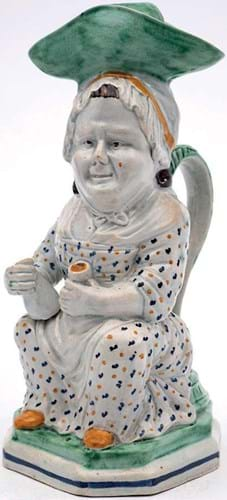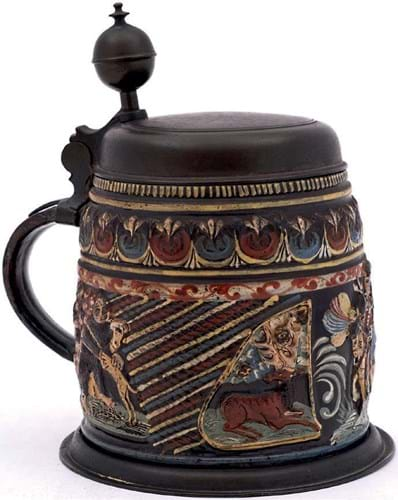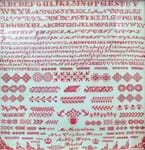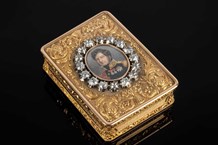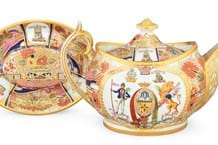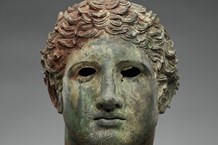While most 19th century and later toby jugs are victims of changing fashion, this 950-lot Devon sale included a c.1790-1800 Prattware jug depicting Martha Gunn.
She was the famous ‘Bathing Woman’ who assisted bathers at Brighton Beach and became friendly with the Prince of Wales.
Modelled seated holding a jug of ale and glass, the 11in (28cm) figure had been expected to make around £700-900 at the auction on July 21-22 but sold to a local collector at £4700.
A 9in (23cm) ‘hunting’ stein was dated to the late 17th century, towards the end of the so-called Golden Period (c.1550-1650) of Saxon stoneware.
With a pewter cover and ball thumbpiece bearing a touch mark for Dobeln, the stein was catalogued as Annaberg or Dippoldiswalde, the two towns south of Dresden whose contribution to the genre remains a matter for scholarly debate.
Typical decorated in polychrome enamels on applied reliefs showing a horseman, a standing huntsman and dogs, stags and a bear, the stein was estimated at £500-600 and went back to Germany at £3900.
Medallion bowl
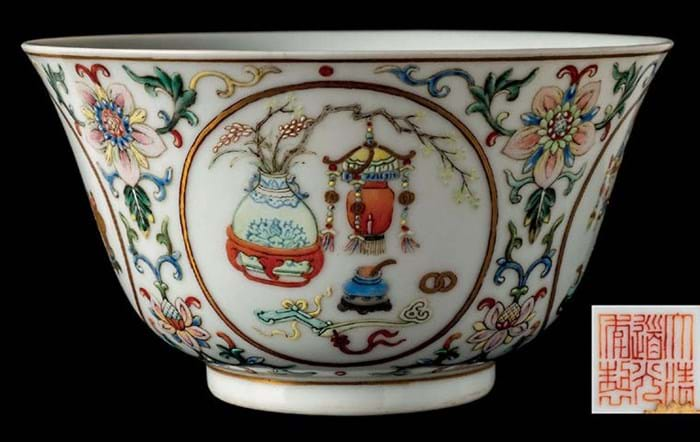
Daoguang period famille rose medallion bowl – £12,000 at Bearnes Hampton & Littlewood.
Perhaps the most identifiable production of the Daoguang period (1820-50) of the Qing empire is the famille rose medallion bowl.
In the 1970s, when many were sourced by London dealers in Hong Kong, they were a few hundred pounds each.
The 4½in (11cm) example here with only minor wear decorated with medallions of precious objects sold at £12,000 to a UK-based bidder on behalf of a Chinese buyer.
Other Far Eastern bidders took two earlier Qing pieces, both carrying some damage.
Bearing a blue six-character Kangxi mark and of the period, a 16in (40cm) diameter charger painted with carp among lotus blossoms and Buddhist emblems had undergone some restoration and there was a crack to the rim.
However, against a £2000-4000 estimate it sold at £5700 to a Hong Kong buyer well known to the Exeter rooms.
Estimated at £300-500 but sold at £4700 was a 7in (18cm) Qianlong mark and period blue and white saucer dish decorated with the Three Friends of Winter design – renditions of the pine, bamboo and plum celebrated for their hardiness in the coldest season.
The price reflected a hairline crack and small rim chips.


